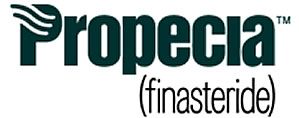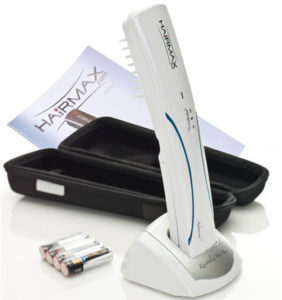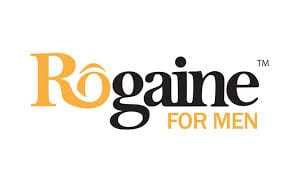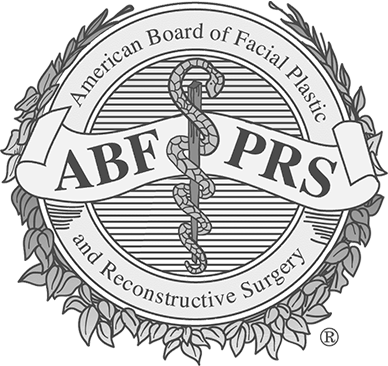Medical Treatments for Hair Loss Layton, UT
Propecia

Finasteride, marketed by Merck under the trade name of Proscar (5 mg) or Propecia (1 mg) was originally developed for men with prostate enlargement (Proscar). While the effect on the prostate was evident, one of the side-effects noticed was regrowth of hair on the head in men with male-pattern baldness. This side-effect was exploited and the development of the lower dose (Propecia) medication was pursued. Finasteride works by selectively blocking the enzyme 5-alpha reductase. This hormone assists in the breakdown of testosterone into DHT (click here for a discussion of the role of DHT in male-pattern baldness). Men taking Finasteride have been shown to have markedly reduced blood levels of circulating DHT. The effect of Finasteride on hair growth is usually slow. Don’t plan on taking the medication for a few short weeks and expect to have all your hair back. Once someone starts taking Propecia you must take it for many months or years and the results may or may not be dramatic. Propecia has been shown to be highly effective at preventing or stopping future anticipated hair loss. Regrowth, can happen with Finasteride use but is more limited. The main reason Dr. Bitner may recommend Propecia use is the proven affect of preventing or dramatically slowing the rate of anticipated hair loss in the future.
What are the side-effects of taking Finasteride?
This medication is very safe to take both in the short and long-term. In the 1 mg dose (Propecia) the main reported side-effect was sexual dysfunction, including decrease libido, decreased ejaculate and erectile dysfunction in about 2% of those taking the medication. This effect was similar to those taking a placebo. It should be noted that these side-effects went away in those continuing to take the medication and in those who stopped taking it. It is especially important to note that a woman who is or might be pregnant should not consume or handle this medication. This medication can potentially result in genital malformations of a male baby if the mother is exposed. However, Finasteride has not been shown to be passed from a man to a woman through saliva or sexual contact.
It should be understood that there is an interaction in men taking Finasteride and their PSA (prostate specific antigen) level. Finasteride has been shown to artificially lower the measured PSA. So, when your doctor checks your PSA, the measured level should be doubled and then that new number should be addressed appropriately. As an example, if your measured PSA is 10 (just slightly elevated) the true number is 20 (moderately elevated). A level of 20 should be pursued more aggressively. Finally, Finasteride has been shown to lower the risk of development of prostate cancer.
Finally, there are numerous questions and controversies about the development of a constellation of symptoms reported to be caused by Finasteride use. The term Post Finasteride Syndrome (PFS) has been coined to describe some of these symptoms. The symptoms that are part of the PFS are common in a population including those who have never taken Finasteride. So, despite the implication of the name “Post Finasteride Syndrome” it remains controversial if PFS is caused by Finasteride use. The International Society of Hair Restoration Surgery (ISHRS) has established a task force to evaluate and monitor scientific information available and make recommendations about it’s use. For a much more detailed discussion including references to specific studies regarding Finasteride use and potential side effects, please follow the link provided to the ISHRS website. The task force opinion and references are updated periodically. At Utah Hair Restoration, we recommend that you research all available information, especially that provided by the ISHRS task force, prior to beginning Finasteride use. This will help you better understand the risks, benefits and potential alternatives to Finasteride and determine if this is right for you.
How does Finasteride work?
Finasteride works by decreasing the amount of circulating DHT. While the medication is very effective at this, the effect on the hair takes many months to manifest. In studies, approximately 50% of men taking Finasteride where shown to have some regrowth of hair. Further, 90% of men where shown to arrest the rate of hair loss. The area of the head most effected by Finasteride is the crown.
Can Finasteride be used in conjunction with a hair transplantation?
Yes, definitely. In fact, I generally recommend that most of my patients, especially those who elect to have a hair transplant, take Finasteride long-term. Finasteride will both enhance the effects of the transplant by increasing the number of hairs present and stop further loss.
Can Finasteride Be Used Topically?
Yes, is the short answer. Finasteride has been studied extensively and has been FDA approved for male-pattern alopecia for decades. However, the FDA studied and approved method of Finasteride use is taken orally as a pill. So, topically applied Finasteride is used but is an “off-label” use. This doesn’t mean that it is ineffective or harmful when used topically but simply that the extensive studies have not been performed verifying both safety and efficacy. Generally speaking, Dr. Bitner recommends that Finasteride be used as indicated by the FDA approved method, namely taking 1 mg of Finasteride by mouth once daily. But, in certain situations, Dr. Bitner may recommend topical use. If this is recommended, the medication will need to be purchased from a compounding pharmacy specializing in producing topical Finasteride. Often, the topical Finasteride will be combined with other topical medications including Minoxidil, topical corticosteroids and others. Remember that topical Finasteride use is not FDA approved to be used in this fashion but evidence exists that it may still be effective with potentially a lower risk of side-effects. During your in-person consultation Dr. Bitner will be happy to discuss topical Finasteride use including risks, benefits and alternatives and provide a prescription if needed. So, feel free to ask!
What Is Dutasteride and Can It be used instead of Finasteride?
Dutasteride (aka Avodart) is an oral medication that is FDA approved for the treatment of benign prostatic hypertrophy. It works much in the same way as Finasteride in that it blocks the enzyme 5-alpha reducatase. This enzyme converts testosterone to DHT. Dutasteride is more specific to a certain sub-type of the enzyme. Dutasteride is not FDA approved for male-pattern baldness. However, doctors have used Dutasteride for male-pattern baldness off-label. While Dutasteride may be an effective treatment for hair loss, how effective, side-effects, etc… are questions largely unanswered by extensive studies.
Minoxidil
Minoxidil, also known as Rogaine, is a topical solution used to treat both male- and female-pattern hair loss. It is one of only two medications approved by the FDA for hair loss, the other being Finasteride. Originally developed as a medication for high blood pressure, it was noted by those using it that it resulted in increased hair growth. The route of administration was changed to topical and Rogaine was developed. The medication comes in two strengths, 2% and 5%. It comes as a liquid and as a foam. The liquid has alcohol and propylene glycol, substances which may leave the hair heavy and difficult to style. Most prefer the foam. The women’s version comes in only the 2% strength.
How does Rogaine work?
While the exact mechanism is unknown, it is thought to effect blood flow to the hair. It works on any hair where it is applied. For example, if Rogaine were placed on the arm, the arm hairs would become thicker and fuller.
What are side-effects to Rogaine use?
This medication, especially when applied topically, is very safe. Though the medication originally could only be obtained with a prescription from a physician, it is now over-the-counter. This change is the result of a long history of very safe use with a minimal side-effect profile. When applied as directed, the side-effects are mostly limited to skin irritation from the other products in the solution (alcohol and propylene glycol). There have been some reports in women using the medication on the head to have an increase in facial hair growth. The incidence of this side-effect is increased when using the 5% strength.
Where can I buy Rogaine?
Minoxidil can be found at most major pharmacies. There are both the name brands available as well as generic alternatives. Sam’s Club makes a generic Minoxidil that is very affordable. The foam is currently only available by purchasing the name brand.
LLLT (Low Level Laser Therapy)

While the exact mechanism of action is unknown, it is thought to work to:
- Increase cell metabolism and the health of blood vessels in the scalp for thicker, supple and more durable hair shafts
- Stimulate the sebaceous glands for silkier-looking hair
- Increase melanin production in the hair follicles, darkening gray hairs
One of the most difficult things with the Hair Comb Max is that the device is difficult and cumbersome to use. It much be physically combed through ones hair for 15 minutes at a time, every day.
At Utah Hair Restoration, we offer LLLT as both a single treatment regimen or in combination with other hair loss treatment modalities (transplant, medications, etc… ) The device we recommend is the Capillus cap.
The benefits of the Capillus device are many:
- Ease of use with a discrete cap and rechargeable battery pack (lasting up to 2 hours)
- Recommended that the device be used 4 days a week for 30 minutes at a time for maximum benefit
- Portable use that can be easily administered while performing your normal daily activities
- Excellent evidence supporting LLLT as an effective means of treating both male and female pattern hair loss
- Durability with a 5 year manufactures warranty
- Guaranteed to be effective or your money back- requires use at the recommended frequency
- Guarantee backed by Utah Hair Restoration- exclusive distributor of the Capillus device
If you think you are a candidate, please schedule an in-person consultation or video Skype consultation to discuss LLLT with Dr. Bitner.
Please go to the Capillus website for more details and information on the laser delivery system.
Other Medical Treatments for Hair Loss
Lasers, pills, ointments, creams, combs and many, many other proposed treatments for hair loss are reported. In fact, in a Google search for hair loss, over 60 million results come up. This confusing maze of treatments that may or may not be effective can be difficult to figure out. There are several things that you, the patient, must know. First, is this genetic alopecia or some other type. Other types of alopecia can sometimes be treated and even cured. Other types of alopecia, when left untreated, can be detrimental to one’s health and needs the appropriate diagnosis. Secondly, what options are proven and would be best suited to each individual circumstance.
Call or email now for an appointment to see Dr. Bitner and his wonderful staff. He will help you wade through the truth and the rumor. You may also complete our online form to request an online consultation.


